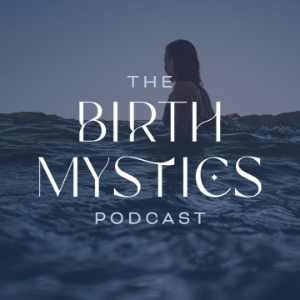
Birth Mystics
Kids & Family Podcasts
Welcome to the Birth Mystics podcast. Who, or what, is a birth mystic? Doulas Katie and Stephanie define it as someone who seeks to embrace the magic, mystery and metaphor of birth. Think ”birth nerds” but with a bit more depth. Here we explore birth through the lens of mythology, poetry, spirituality, psychology, and more.
Location:
United States
Genres:
Kids & Family Podcasts
Description:
Welcome to the Birth Mystics podcast. Who, or what, is a birth mystic? Doulas Katie and Stephanie define it as someone who seeks to embrace the magic, mystery and metaphor of birth. Think ”birth nerds” but with a bit more depth. Here we explore birth through the lens of mythology, poetry, spirituality, psychology, and more.
Language:
English
Website:
https://stephanie8r.podbean.com
Email:
stephanie@bhavabirth.com
Ariadne's Thread
Duration:00:41:30
The Neuroscience of Manifesting
Duration:00:44:33
Mind and Matter
Duration:00:34:54
The Uninhabitable House
Duration:00:46:02
The Day Boy & the Night Girl
Duration:00:31:09
Medusa
Duration:00:40:35
Brainwaves & Consciousness
Duration:00:46:11
Selkie
Duration:00:38:05
The Yellow Wallpaper
Duration:00:48:27
Intentional Conception
Duration:00:38:08
Covert Control
Duration:00:43:26
Season 2 Introduction: We're Back!
Duration:00:13:43
Episode 18: Lilith, Eve & the Serpent
Duration:00:35:05
Episode 17: Tui & La
Duration:00:37:38
Episode 16: The Goddess Trinity
Duration:00:34:00
Episode 15: You Birth Like You Live
Duration:00:36:39
Episode 14: Mama Bear Musings
Duration:00:33:30
Episode 13: The Princess and the Pea-ple Pleaser
Duration:00:36:05
Episode12: Get Out of the Way
Duration:00:39:57
Episode 11: Be Here Now
Duration:00:40:08